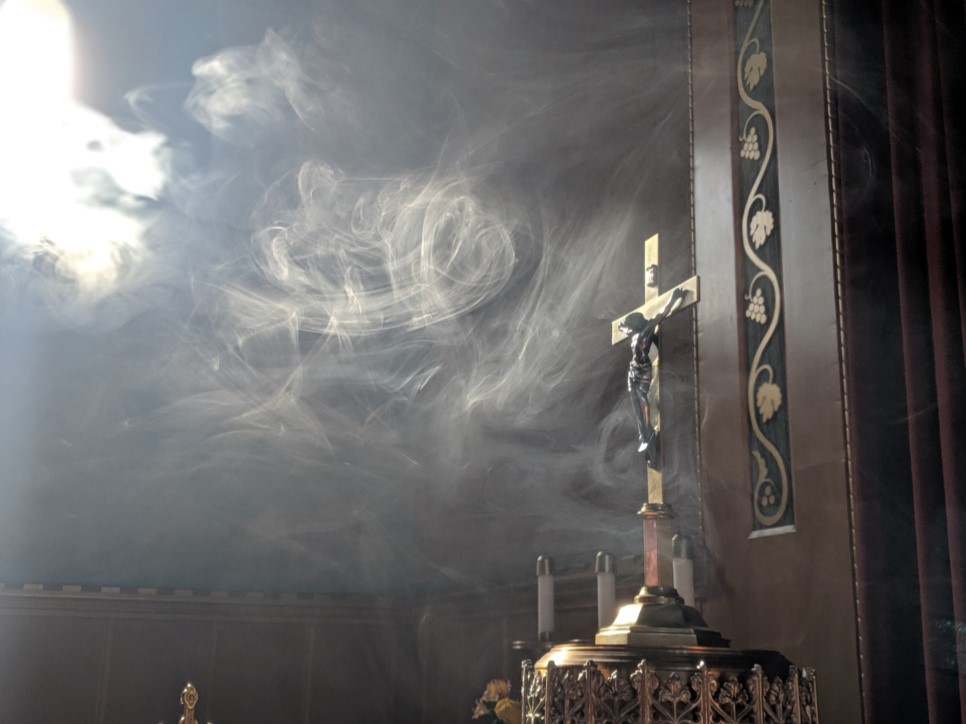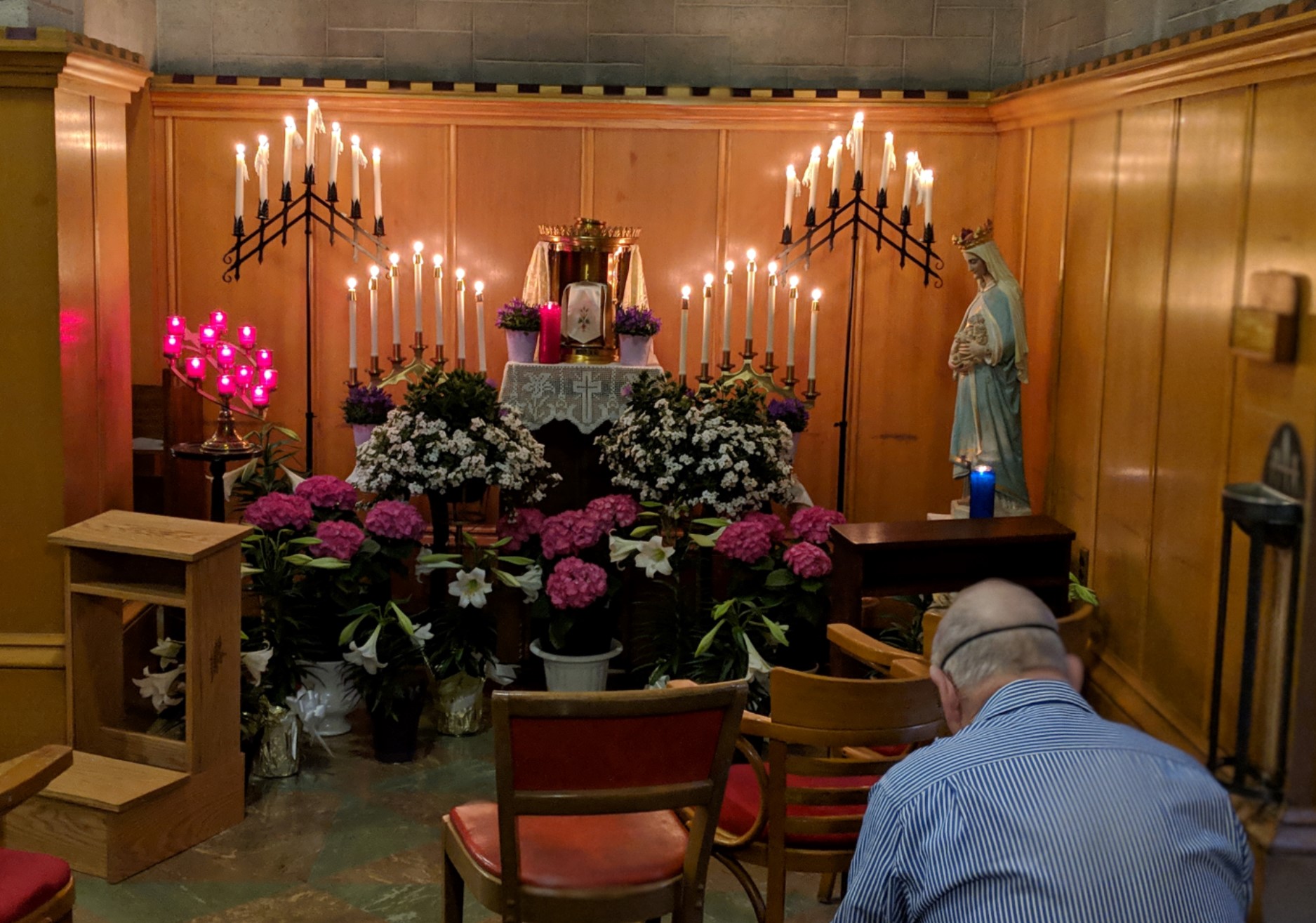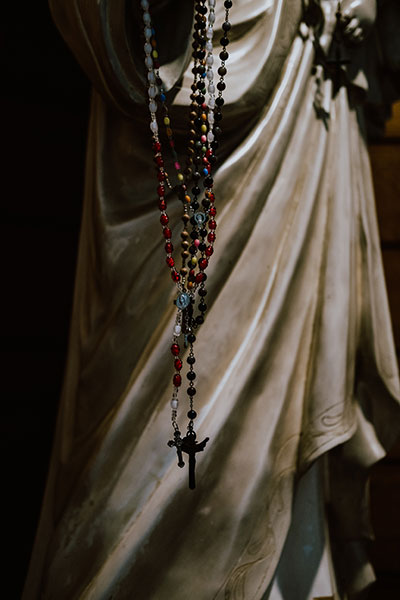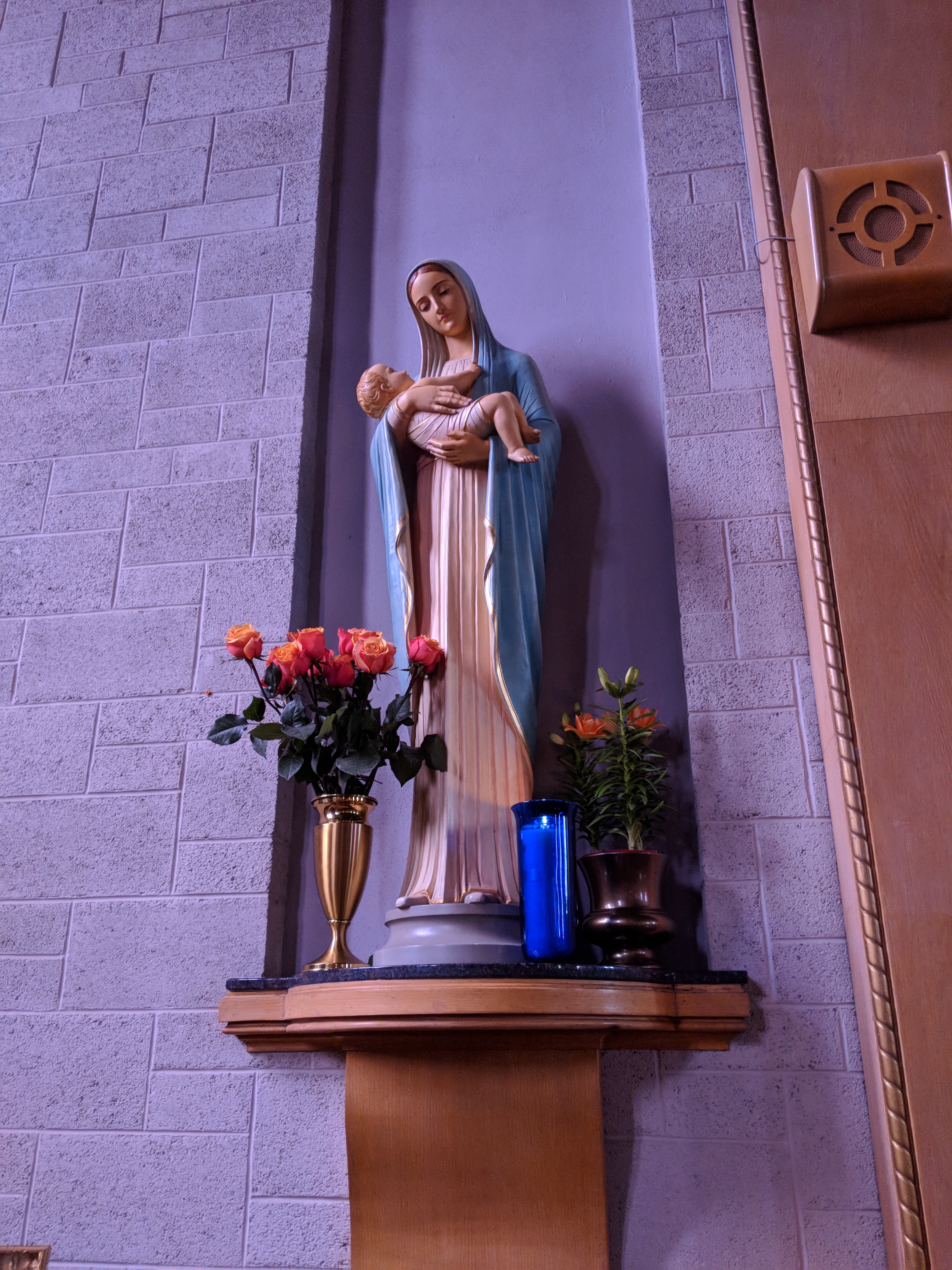To complete the organ the remainder of the project will need to be fundraised. To do this we are offering people the chance to adopt a set of pipes called a rank. Each rank is a specific sound that you hear when you listen to the organ. Some imitate real instruments and others are unique to the organ.
I have decided to suggest a $100 minimum donation per rank, donations can be made overtime, or multiple people can adopt a rank together. There is something for everyone if you have any questions please let me know.
Payment at this time by cash or check only, selection of ranks is on a first come basis, please provide contact information so if your first choice is taken we can find you a different one.
Pipe Ranks up for adoption
Tonal finishing and fine tuning have not yet taken place.
Swell Division ( East Chamber)
16’ Lieblich Gedackt: (Recording) The name Stopped Diapason is the traditional English equivalent of the German Gedeckt, the French Bourdon, and the Spanish Tapadillo. It dates at least as far back as the beginning of the 16th century, and was adopted by early American organ builders. The name denotes a stopped flute of 8' pitch, usually made of wood. Sumner describes the Stopped Diapason as the second 8' stop in English Great, Choir and Swell organs until the smaller-scaled Lieblich Gedeckt became popular after 1851, but notes that it “did not cloy as quickly as modern lieblichs”. Hopkins & Rimbault describe its tone as fluty and mellow, free from all reediness or roughness, and mention that when used alone, it is better suited for solo work than polyphony.
8’ Salicional (Recording) In the 17th century the Salicional was a specialty of Habsburg Europe, from which Snetzler brought it to England where it became very popular in the 19th century. Wedgwood tells us that the German Salicional was a string, the French variety a quiet Diapason, and the English variety a slightly stringy Dulciana. Bonavia-Hunt and Maclean describe its ideal tone as an echo Geigen. Skinner claimed the Salicional as a stop native to America, and voiced it more keenly than his Gambas. Now one of the most common string stops, it is most often found at 8' pitch, it is often accompanied by the Voix Celeste.

8’ Vox Celestes:(Recording) The ubiquitous Voix Céleste is typically a single rank of pipes yielding a mild string tone, found in Swell divisions and intended for use with a Salicional. The name was coined in France in the 1840's. It is tuned sharp and produces an undulation when played with the Salicional
8’ Aeoline: (Recording) The Aeoline is a string stop of very soft tone; the softest string tone in the organ, according to Audsley (but see Echo Aeoline). As a flue stop it first appeared around 1820 in Germany, and soon became popular in Germany, Switzerland and America in both large and small instruments.
8’ Vox Angelica:To Soft to hear on a recording. The Celesting rank tuned sharp to pair with the Aeoline
8’ Spire Flute: (Recording) An open flute stop whose pipes are conical in form. While this pipe form is a common one, dating back to the late 15th century (according to Grove), it is not always clearly evidenced by the name on the stop control.
Tonally, the Spire Flute is usually classified as a Flute/String hybrid, and occasionally as a Flute/Diapason hybrid. Its tone has been described as reedy or breathy, and blends very well.
4’ Praestant: (Recording) An Open Diapason of 4' pitch. It is used in the principle chorus and is one of the backbones of the organ.
8’ Vox Humana: (Recording) The Vox Humana is one of the oldest organ stops, dating back at least as far as the late 1500's. A reed stop of the Regal class, it has been made in a wide variety of forms. However, throughout the centuries it has most often employed cylindrical resonators, usually 1/4 or 1/8 length, and usually partially or fully capped. It is arguably the only stop to survive, in its original form, through the symphonic excesses of the late nineteenth and early twentieth century.
The tone of the Vox Humana is not particulary unique; other Regals produce similar sounds. Its name, however, establishes a tonal goal which has caused countless critics to write it off as unsuccessful or even laughable. While organ builders have tried for half a millenium to imitate the human voice, the most successful attempts only manage to approximate the sound of a male chorus singing in the distance.
It has been often stated that the most important stop in any organ is the room into which it speaks, and the Vox Humana epitomizes this principle. The success or failure of this stop depends not so much on the details of its construction, but rather on its acoustical environment. A large, reverberant room, distance from the listener, and enclosure in a swell box all contribute greatly to its effect. A tremulant is also essential, which must be carefully adjusted.
Choir Division (West Chamber)
Giegan Diapason: (Recording) The Geigen, whose name comes from the German geige, meaning “violin”, is a common diapason/string hybrid. While its tone varies between builders, it is usually (and properly) more diapason than string. It blends well, and is often used as the 8' foundation in Swell divisions. It is most often found at 8' pitch, though 4' examples are not uncommon.
Groves dates the Geigen from around 1620 in central Germany. It was quite popular in the 19th century, and remains popular to this day.
8’ Dulciana: (Recording) The true English Dulciana is a diminutive Diapason, smaller in scale, softer and more delicate in tone. It is often the softest stop on the organ in which it is placed. It was introduced to England by John Snetzler in 1754 at the Church of St. Margaret, Lynn Regis (King's Lynn), Norfolk. It brought him great acclaim, and was soon a favorite of English organ builders. Grove dates the name from as early as c1640, indicating gentle flue stops of various forms in non-Latin Europe. Eventually English builders apparently grew tired of the tone of the Dulciana, and began voicing it with a stringy tone. In 1905 Wedgwood wrote without remorse: “the real Dulciana is rapidly becoming obsolete, yielding its place to the Salicional.”
While most sources agree on the definition of the Dulciana as a diminutive Diapason, and not a string, E. M. Skinner saw it differently. Acknowledging its origin as an Echo Diapason, he writes: Reference has been made to the Dulciana as belonging to the Diapason family, because of its lack of string quality, but this is erroneous as its scale is out of the Diapason range. It may be appraised more accurately as a muted string.
8’ Unda Maris: The Celesting Rank for the Dulciana
8’ Hohl Flute: (Recording) Adlung describes it as an open flute of wide scale and hollow tone, and saw little or no difference between it and the Waldflöte. By the 19th century, the name Hohlflöte had come to mean a wide-scaled open wooden flute of dull, hollow tone. The best description we have of this stop comes from Audsley, who provides the illustrations reproduced here.
The Hohlflöte, of wood, is made in different forms; all with the aim of obtaining from pipes of moderate scales the maximum volume of the tone peculiar to the stop, while speaking on a copious supply of wind at a moderate pressure.

8’ Viol De Gamba: (Recording) An imitative string stop of 16' or 8' pitch, voiced to resemble the stringed instrument of the same name.

8’ Oboe: (Recording) The English style of Oboe, which since the 19th century has been the predominant style, features a striking reed and a full-length resonator with two parts, both of inverted conical form, with the upper part (the "bell") having a wider flare than the bottom part.
The Oboe serves as both a solo and an ensemble stop, though Sumner criticizes Willis Oboes as not blending well. On small instruments it is often the only reed stop, where its tone may approach that of a small Trumpet. Maclean suggests that it is probably the most common reed stop. This may be true on smaller instruments, but larger instruments are more likely to have multiple Trumpets then multiple Oboes. While the tone of the Oboe varies a great deal, it is generally smooth and of medium strength.
Positif Division (Balcony Lower Level)
4’ Gemshorn: (Recording) The modern Gemshorn is a foundation stop of conical construction, having a tone which may be classified as a flute/string hybrid. Its tone has apparently varied considerably since it first appeared in the first part of the 16th century; Williams lists the name Gemshorn as an alternate name for Waldflöte
It is reasonable to assume that it was originally intended to imitate the instrument of the same name, a fipple flute with a closed end made from an animal's horn. The instrument has a sweet, hollow tone which is similar to that of an ocarina, not at all like the tone of the modern organ stop.
2 2/3’ Nazard:(Recording) A mutation stop of 2-2/3' in the manuals and 5-1/3' in the pedal. It represents the lowest non-unison pitch that reinforces a harmonic of the fundamental pitch (8' on the manuals, 16' on the pedals). As such, it is the most important mutation pitch. It serves to bind together the 8' and 4' tones in a Principal chorus.
This stop is usually constructed of open cylindrical metal pipes yielding Diapason tone, usually and properly of smaller scale than the 4' Octave of the same division.
2’ Fifteenth: Next to be installed.The Principal of 2' pitch in the manuals. The pipes are of open metal construction.
1 3/5 Tierce: Next to be installed. Denotes a mutation stop of 1-3/5' on the manuals, supporting the 8' harmonic series. It supports the fifth harmonic, sounding approximately an E when played from a C key, seventeen scale steps higher (hence the name Seventeenth). It is therefore known as a “third-sounding” rank.
According to Grove, third-sounding ranks have been known in the organ at least as early as c1450. It was apparently first used extensively in the classical French organ, where it was a wide-scaled flute stop, usually open but sometimes (according to Williams) stopped.
While Grove and Williams state that the Seventeenth was found outside France only in French-influenced organs, Adlung (writing in the mid-1700's) calls it “a familiar stop in the organ”, and describes it as a principal rather than a flute. On organs of the 20th century, the Tierce is often found as part of the Great principal chorus. This rank also often appears as part of a Sesquialtera.
It should be noted that in classical instruments this pitch should never be borrowed from an octave-sounding rank. The harmonic it is supposed to support is too far in pitch from the nearest note in the equally-tempered scale; it can never sound properly in tune.
16’ Cromhorne:(Recording)This is one of the oldest organ stops, first appearing in the late 1400's. It has varied in construction and timbre over the centuries. While it takes its name from the instrument of the same name, a capped reed with a curved body and a muffled, buzzing tone, the organ stop in its most familiar form has a tone resembling that of the Clarinet, though that tone did not develop, according to Williams, until the early 1800's.
In the classical French organ (1650-1790) it was the reed on the Positif: while the Positif might contain other reeds, and other divisions might contain Cromornes, no French classic organ of any size lacked one in its Positif. Here it was used as both a solo and a combinational stop; it was often specified in the titles of compositions, and it dominated the Grand Jeu of the Positif. It was usually made with narrow cylindrical half-length resonators. According to Dom Bedos, the Cromorne was seldom used in the Grand Orgue, but usually appeared in the Positif, but usually only in small instruments which did not have enough space for a Trompette, and rarely in large instruments. This contradicts other evidence, which shows that the Cromorne was an essential tonal ingredient of the classical French organ.
Great (Balcony Upper Level) Not Yet playing
16’ Dulciana: The true English Dulciana is a diminutive Diapason, smaller in scale, softer and more delicate in tone. It is often the softest stop on the organ in which it is placed. Eventually English builders apparently grew tired of the tone of the Dulciana, and began voicing it with a stringy tone. Plays at 16' in the pedal and on the Great manual.
16’ Diapason: From our Original Wicks Instrument, this is the largest Diapason on the organ and has a rich warm sound. In the pedal it provides the most strength and foundation.
8’Montre: The second Diapason in the Great. Most of it is located in the facade. It comes form a 1905 Kimball organ that whose original home was just a few blocks from here.
8’ Doppel flute: The Doppelflöte is a wooden stop with two mouths, located on opposite sides of the pipe. Ours is from a 1909 Esty abandoned when the freeway came through town. It is nearly always found at 8' pitch. Authorities disagree on whether it is open or stopped, the stopped construction seems to be the more common, particularly in the 1800's.
The earliest reference to this pipe form is found in the second volume of Praetorius's Syntagma Musicum. Therein the author credits Esaias Compenius with having invented it around 1590 as a covered stop of 4' pitch, calling it Duifloete. Praetorius remarks that it had not yet become popular.
According to Williams, the Doppelflöte was frequently found in Silesia (southwest Poland and northern Czechoslovakia) from the 1600's through the 1800's. It was never popular in England, but in America was a favorite of the Roosevelt firm. Its tone has been described as full, strong, pure, round, and liquid. Some sources criticize it as being hooting. It is chiefly a solo stop; Audsley considers it a good blender, but Skinner disagrees. Because of its two mouths, the Doppelflöte requires more than the usual amount of space on the wind chest.

4’ Flute Harmonique: The principle of the harmonic pipe — making the pipe twice its normal length and then overblowing it to speak the octave — has been known at least since the early 17th century. It was used infrequently until Cavaillé-Coll invented the Flûte Harmonique, an open metal harmonic flute stop first used in 1841 in the Church of Saint-Denis near Paris, France. Cavailleé-Coll placed seven harmnic flute stops in that instrument, using the names Flûte Traversiére Harmonique, Flûte Octaviante Harmonique and Flûte Octavin Harmonique, as well as Flûte Harmonique. It soon became popular in both France and England.
Harmonic flutes are constructed from open pipes which are twice the normal speaking length. The pipes are overblown to speak their first harmonic (the octave). A hole is pierced in each pipe to prevent the formation of an acoustical node at the center of the pipe.
4’ Praestant: An Open Diapason of 4' pitch. It is used in the principle chorus and is one of the backbones of the organ.
2 2/3’ Twelfth: A mutation stop of 2-2/3' in the manuals and 5-1/3' in the pedal. It represents the lowest non-unison pitch that reinforces a harmonic of the fundamental pitch (8' on the manuals, 16' on the pedals). As such, it is the most important mutation pitch. It serves to bind together the 8' and 4' tones in a Principal chorus.
This stop is usually constructed of open cylindrical metal pipes yielding Diapason tone, usually and properly of smaller scale than the 4' Octave of the same division.
2’ Doublette: Open Metal pipes, sounding 2 octaves above the diapason
IV Fourniture: The name Fourniture was originally a French name, elsewhere called Mixture or Mixtur, for the higher-pitched ranks split off from the Blockwerk. According to Sumner, early examples rarely included a Twelfth, and the number of ranks increased as the scale ascended.
In the classical French organ, the Fourniture, along with the Cymbale, was an essential ingredient of the Plein Jeu registration, and was included in all but the smallest instruments. It contained octave- and fifth-sounding ranks only, and in its upper range included pitches supporting the 16' and sometimes even the 32' harmonic series. At the bottom of its compass, the Fourniture started at lower pitches than the Cymbale, but at the top of its compass contained much the same pitches. The two mixtures were occasionally combined into a single Plein Jeu mixture, especially toward the end of the classic period and afterward.
In England beginning around 1680, the Furnitures of Renatus Harris included third-sounding ranks, especially by 1740, according to Grove. In the 19th century, Willis and Cavaillé-Coll included thirds.
8’ Trumpet: I have this planned to be the solo trumpet for fanfares and processions








